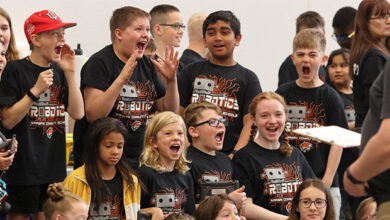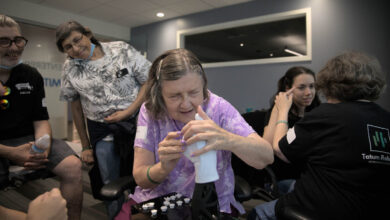Changing robotics training with infinite virtual environments

Researchers have revealed Holodeck, a system inspired by Star Trek’s Holodeck, designed to generate limitless interactive 3D environments for training robots
Developed by a team of experts from the University of Pennsylvania and collaborators from leading institutions, including Stanford University and the Allen Institute for Artificial Intelligence, Holodeck promises to accelerate the development of robots capable of navigating and interacting safely in complex real-world scenarios.
Startrek coming to life
Holodeck operates on the idea of using language-based commands to replicate detailed virtual spaces.
The idea comes from Captain Picard’s requests onboard the Starship Enterprise, users can describe the environment they envision, and Holodeck brings it to life with authenticity.
This system is set to address a challenge in AI research: the lack of diverse virtual environments needed to train AI effectively.
“We only have a fraction of that amount of 3D environments for training so-called ’embodied AI.’ If we want to use generative AI techniques to develop robots that can safely navigate in real-world environments, then we will need to create millions or billions of simulated environments” says Callison-Burch.
The process behind Holodeck
Holodeck uses large language models (LLMs), similar to those powering advanced chatbots like ChatGPT, to interpret user commands and generate environments accordingly. Users can specify details, from the layout and furnishings to specific objects like a researcher’s apartment.
To strengthen Holodeck’s effectiveness, researchers conducted comprehensive tests comparing its outputs with existing tools like ProcTHOR, a predecessor developed by AI2. Students consistently preferred scenes generated by Holodeck for their realism, coherence, and overall appeal across various settings, including stores, public spaces, and offices.
Holodeck’s impact on robot training
By fine-tuning AI agents using environments generated by Holodeck, researchers observed improvements in the agents’ ability to navigate spaces.
Agents trained with Holodeck-generated scenes showed a higher success rate in locating specific objects like a piano in a music room compared to traditional methods.
“This field has been stuck doing research in residential spaces for a long time,” says Yang. “But there are so many diverse environments out there, efficiently generating a lot of environments to train robots has always been a big challenge, but Holodeck provides this functionality.”
With Holodeck’s ability to generate immersive and varied environments rapidly, Holodeck holds promise for applications in gaming, virtual reality, architecture, and urban planning.



